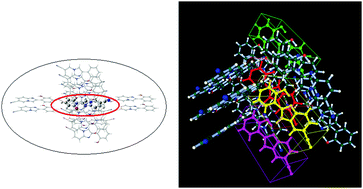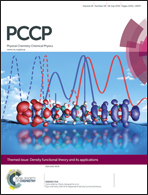Influence of intermolecular interactions on solid state luminescence of imidazopyridines: theoretical interpretations using FMO-TDDFT and ONIOM approaches
Abstract
6-Cyano-2-(2′-hydroxyphenyl)imidazo[1,2-a]-pyridine (6CN-HPIP) shows polymorph-dependent luminescence with the three different crystal forms exhibiting the packing-controlled tuning of bright colors, orange, yellow, and red. The distinctive emission in aggregated states was treated with finite cluster models and analyzed by means of quantum chemistry calculations. The influence of structural displacements and intermolecular interactions in the crystalline state on solid state luminescence was examined in detail using the Fragment Molecular Orbital (FMO) scheme, suitable for studies of aggregated molecular systems. The FMO pair interaction analysis of the S1–S0 emission maxima indicated that the intermolecular side-to-side interactions cause hypsochromic shifts; facial interactions induce bathochromic shifts; and crystal packing effects in total induce hypsochromic shifts. The FMO predictions of the emission maxima offered qualitatively satisfactory agreements with the experiments. However, the small cluster models including up to 17 molecules did not reach quantitative convergence, i.e., the emission colour order among them was not well reproduced.

- This article is part of the themed collection: Density functional theory and its applications

 Please wait while we load your content...
Please wait while we load your content...